The Bali Taxi Mafia
The infamous “Bali Taxi Mafia” is an underground network of taxi drivers that’s made a notorious name for themselves among tourists and locals alike.
This guide explains who they are, what they do, how they affect the local people and tourists, and most importantly, how to deal with them.
The term “Bali Taxi Mafia” is used metaphorically to describe the aggressive and controlling practices of this informal network of taxi drivers. They are not an actual mafia in the traditional sense, like the Italian Mafia or other organized crime syndicates, with a strict hierarchical structure and involvement in various criminal activities.
Instead, the term is used to emphasize their monopolistic behavior, price-fixing, and intimidation tactics within the taxi industry in Bali.
The Bali Taxi Mafia is an informal network of local taxi drivers who have formed a tight-knit group with the primary goal of controlling the taxi market in Bali. They often engage in price-fixing, intimidation, and other aggressive tactics to maintain their dominance over the transportation industry, pushing out competitors and maximizing their profits.
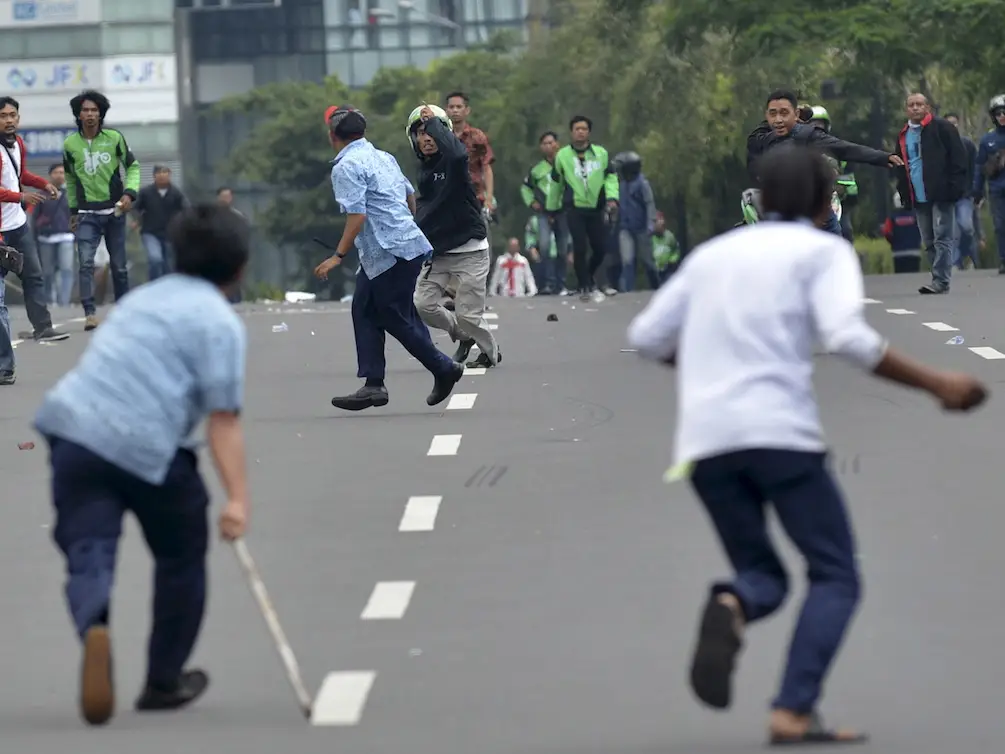
What Do They Do?
The Bali Taxi Mafia is known for engaging in several practices that negatively affect both locals and tourists. Some of these practices include:
Price-Fixing: Drivers within the network often agree to charge inflated fares, especially to tourists who may not be familiar with the local rates.
Intimidation: They have been known to harass and intimidate other taxi drivers and ride-sharing services such as Grab and Gojek, pressuring them to join their network or leave the area.
Controlling High-Traffic Areas: They maintain a strong presence in popular tourist spots, airports, and other high-demand locations, making it difficult for non-mafia taxis to operate.
Refusing Short-Distance Fares: To maximize profits, Bali Taxi Mafia drivers often refuse short-distance rides, even though it’s against the law.
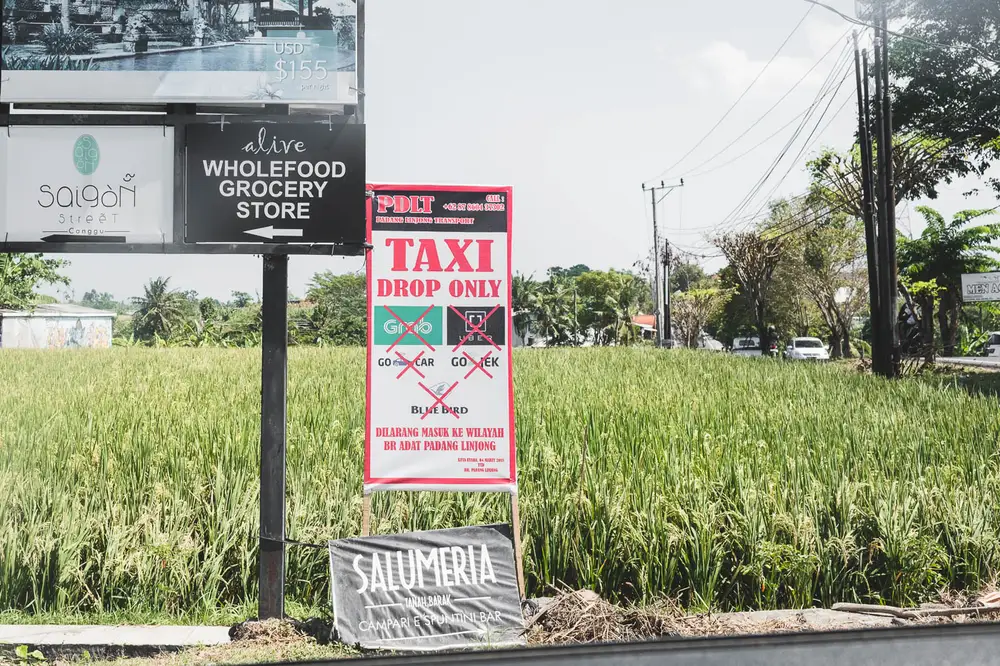
How This Affects Locals and Tourists
The practices of the Bali Taxi Mafia have several negative impacts on both the local population and tourists visiting the island:
Higher Transportation Costs: Due to price-fixing, locals and tourists alike are often forced to pay inflated fares for taxi rides, making transportation more expensive than it should be.
Limited Options: The aggressive tactics used by the Bali Taxi Mafia limit the availability of alternative transportation options, such as ride-sharing services, for both locals and tourists.
Negative Reputation: The actions of the Bali Taxi Mafia contribute to a negative perception of the island’s transportation industry, potentially harming Bali’s image as a tourist destination.
Sense of Danger: The presence of a such a mafia like organization, even if not technically a true mafia, generates a feeling of unsafe and uncomfortable feelings in general.
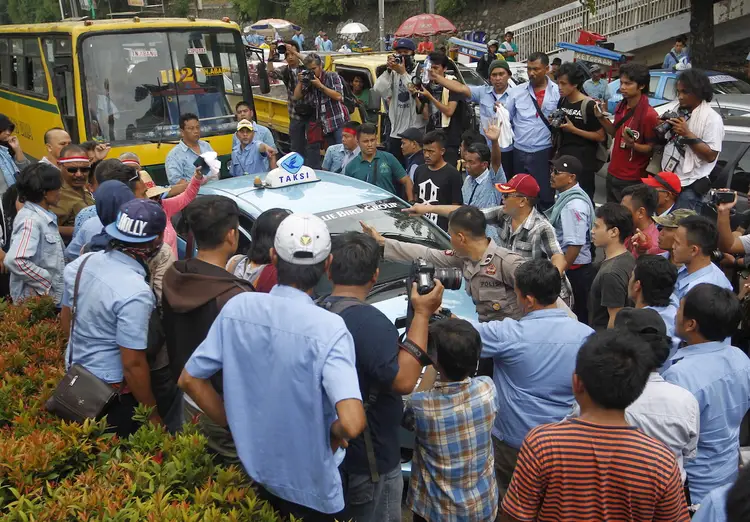
Where The Taxi Mafia Operate
The Bali Taxi Mafia’s activities are not limited to one specific area of the island, but they are more prevalent in popular tourist destinations and high-traffic locations. Some areas where the Bali Taxi Mafia is known to operate include:
Kuta: As one of the most popular tourist destinations in Bali, Kuta is notorious for its concentration of Taxi Mafia activity. They often target tourists around popular spots like Kuta Beach, shopping centers, and nightclubs.
Seminyak: Another popular area for tourists, Seminyak also sees its fair share of Bali Taxi Mafia activity. They are particularly active around upscale hotels, beach clubs, and restaurants.
Ubud: As a cultural hub and popular destination for tourists seeking a more relaxed atmosphere, Ubud is not immune to the presence of the Taxi Mafia. They can be found around popular attractions like the Monkey Forest, Ubud Palace, and various art galleries.
Ngurah Rai International Airport: Airports are always prime locations for taxi drivers, and the Taxi Mafia has a strong presence at Bali’s main international airport. They often try to approach arriving passengers directly, offering rides at inflated prices.
Nusa Dua: As a luxury resort area, Nusa Dua attracts many tourists who may be targeted by the Bali Taxi Mafia for overpriced rides.
While the Taxi Mafia is particularly active in these areas, their influence can be felt throughout the island. To minimize your chances of encountering them, it’s essential to be aware of their tactics and explore alternative transportation options when possible.
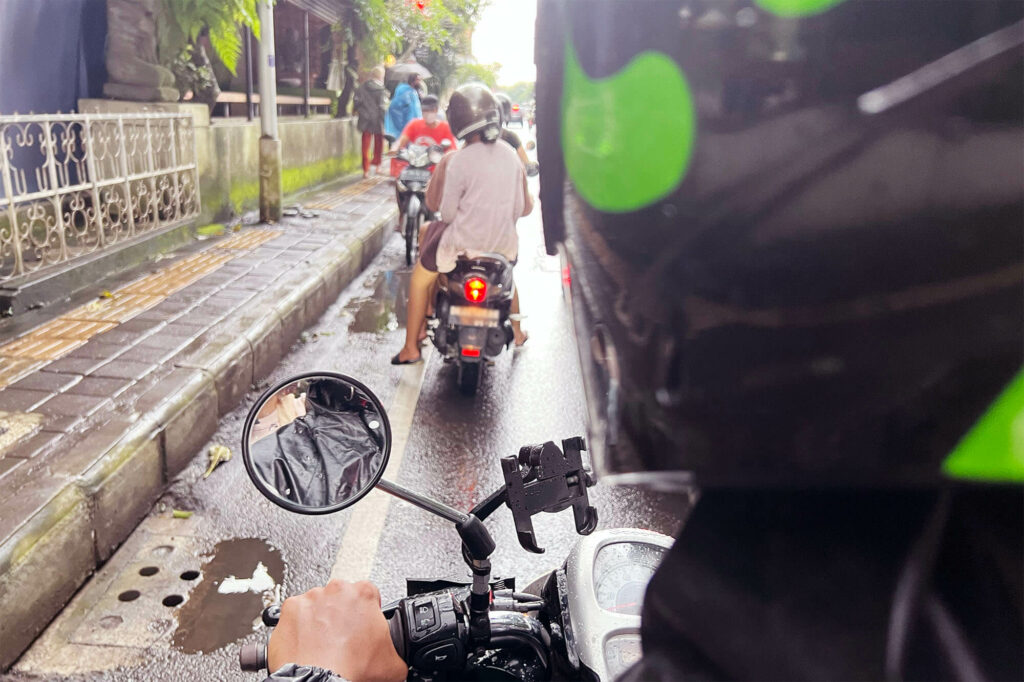
How to Deal with the Bali Taxi Mafia
While the Bali Taxi Mafia can be a challenge to navigate, there are several strategies for dealing with them and minimizing their impact on your travel experience:
Use Ride-Sharing Apps: Although the Taxi Mafia may intimidate ride-sharing drivers, services like Grab and Gojek are still available. These apps offer more transparent rates and significantly cheaper costs, as well as being a much safer alternative to hailing a taxi on the street.
Know The Local Rates: Familiarize yourself with the standard taxi rates in Bali to avoid being overcharged. Negotiate the fare before entering the taxi or insist on using a meter if available.
Hire a Private Driver: Many tourists and expats choose to hire private drivers for the day or the duration of their stay in Bali. This provides a reliable and safe transportation option at a fixed price agreed upon from the start, without having to navigate the taxi scene.
Use Alternative Transportation: Consider renting a scooter, bicycle, or even walking when possible to avoid dealing with taxis altogether.
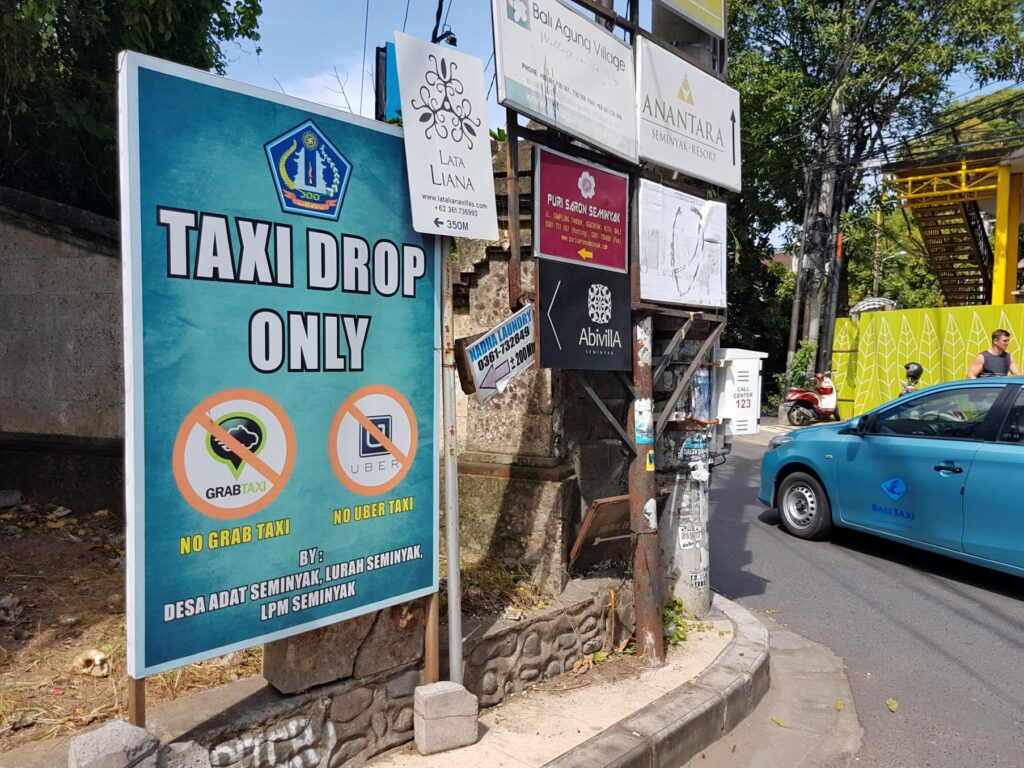
The Bali Taxi Mafia is an unfortunate reality of living and traveling in Bali. However, by understanding who they are, what they do, and how they affect both the island, you can better navigate the transportation landscape and minimize the impact they have on your experience. Stay informed, explore alternative options, and always trust your instincts when it comes to choosing transportation in Bali.







